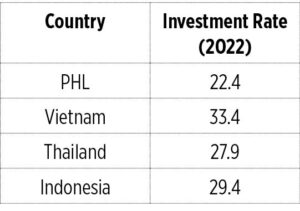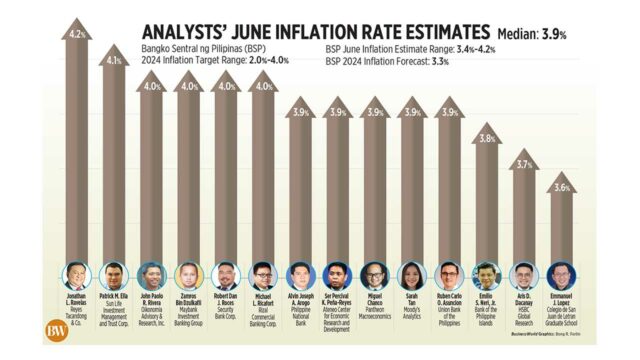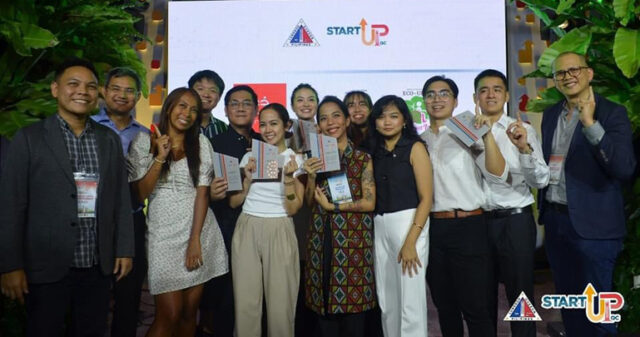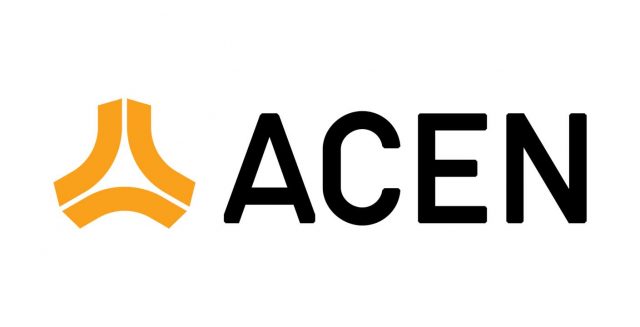Remember Maharlika?
I refer to the Maharlika Wealth Fund or Maharlika Investment Fund, now formalized in Republic Act No. 11954. It, especially its original version, was met with widespread and staunch opposition, forcing the proponents to retreat and make concessions.
The proposal was eventually passed by both Houses of Congress, but what the legislators approved was different from the original version. Congress struck out the ugliest provisions found in the original bill. So, the Maharlika we have today is less monstrous than the original bill. But it is still ugly.
The most controversial, most objectionable provision of the original Maharlika was having financial institutions like the Social Security System (SSS), the Government Service Insurance System (GSIS), the Bangko Sentral ng Pilipinas (BSP), the Development Bank of the Philippines (DBP), and the Land Bank of the Philippines (LANDBANK) transfer a substantial amount of their funds to capitalize Maharlika.
That would impair the operations of the financial institutions in fulfilling their core mandates. And for SSS and GSIS, that would have meant going into uncharted waters and exposing the contributions of members to unjustified elevated risk.
But because of the ensuing firestorm, Congress excluded the SSS, GSIS, and the BSP from contributing to Maharlika’s startup fund. Sorry for DBP and LANDBANK. Consequently, DBP and LANDBANK had to seek regulatory relief from the BSP because their capital infusions into Maharlika resulted in non-compliance with their minimum capitalization requirements.
Maharlika continues to haunt us. Now, a Maharlika 2 has reared its ugly head.
This time, the Maharlika is expressed through a provision in the Fiscal Year (FY) 2024 General Appropriations Act (GAA), stating that excess fund balances of Government-Owned and/or -Controlled Corporations (GOCCs) can become the funding source for Unprogrammed Appropriations (UA).
Unprogrammed Appropriations, to quote the Department of Budget and Management, “are standby appropriations outside the approved government fiscal program….” As such, they “are not automatically allocated, and can only be released if several funding conditions are met, such as when the government… is able to collect excess revenue in the total tax revenues or any of the identified non-tax revenue sources from its revenue target, or new revenue from new tax or non-tax sources, or should foreign or approved financial loans/grants proceeds are realized.”
But unlocking the funding for the UA faces problems. The administration frowns upon increasing taxes (even refusing efficient ones, which have popular support like the sin taxes). And excess revenue from current taxation is unlikely as the Bureau of Internal Revenue (BIR), despite serious effort, is struggling to meet its collection target for 2024. Excise tax collection, for example, is below the target.
Hence, the resort to an “innovation,” which is to obtain the excess fund balances of GOCCs. This is a Maharlika redux.
GOCCs are constrained by their own charters. Some able to generate surpluses may need those funds for their future upkeep or investments to meet their goals. In other words, GOCCs have different specific characteristics, and thus a cookie-cutter approach by the National Government to extract excess funds from them is unsuitable, harsh, and inconsiderate.
And there is one GOCC whose mandate is to spend the funds it gets on its members. Surpluses should not be diverted elsewhere. We refer to the Philippine Health Insurance Corp. or PhilHealth.
But a Department of Finance (DoF) Circular (numbered 003—2024) regarding the fund balance of GOCCs argues otherwise. The DoF is being directed by the FY 2024 GAA, specifically Section XLIII (1) (d) on Unprogrammed Appropriations, to issue the implementation guidelines for the financing of UA sourced from the “[F]und balance of the GOCC from any remainder resulting from the review and reduction of their reserve funds to reasonable levels taking into account the disbursement from prior years.”
In pursuit of the above, the DoF Circular targets the excess funds of PhilHealth. The basis is that PhilHealth’s reserve fund by 2023 stood at P463.7 billion, and premium income since 2018 has substantially exceeded benefit claims and operating expenses. A further basis is that between 2021 and 2023, the cumulative unutilized government subsidy for the indirect contributors amounted to P89.9 billion. (The indirect contributors consist of indigents, beneficiaries of the Pantawid Pamilyang Pilipino Programs, senior citizens, persons with disabilities, Sangguniang Kabataan officials, individuals identified at point-of-service or those sponsored by local governments and other Filipinos aged 21 years old and above without capacity to pay premiums.)
The DoF arguments, which proceed from the above, are summarized as follows:
1. The unspent money is a benefit denied to Filipinos, and the unused subsidies have opportunity costs in terms of funding unappropriated programs.
2. The National Government, the DoF claims, “is in a better position to effectively utilize the unused subsidies for programs that directly and immediately benefits (sic) the Filipino people.
3. The National Government in the future has the flexibility to increase subsidies once PhilHealth has shown the capacity to speed up the use of its huge reserves for benefit payments.
4. Using the unutilized National Government subsidies to fund UA is a disciplining mechanism for PhilHealth “to use the funds or lose it.”
But here’s the rub: The DoF Circular is violating the law and is undermining Universal Health Care (UHC) for all Filipinos.
But let’s review Chapter III (National Health Insurance Program), Section 11 (Program Reserve Funds) of Republic Act No. 11223 (An Act Instituting Universal Health Care for all Filipinos):
“That whenever actual reserves exceed the required ceiling at the end of the fiscal year, the excess of the PhilHealth reserve fund shall be used to increase the Program’s benefits and to decrease the amount of members’ contributions.” (Underscoring mine.)
In short, the reserves PhilHealth has accumulated that “exceed the ceiling equivalent to the amount actuarially estimated for two years’ projected Program” must be used to increase benefits or services and reduce members’ contributions. The subsidies cannot be used for other purposes, like what the DoF Circular wants to do.
It must likewise be clarified that the government subsidies to PhilHealth are for the indirect contributors, mainly the poor. Thus, removing the subsidies to them is tantamount to degrading the indirect contributors.
The funds from the direct and indirect contributors are pooled to benefit everyone. The pooling of funds is an expression of solidarity. Pooled funds from the direct and indirect contributors likewise create economies of scale and strengthen government, including PhilHealth, to become a national strategic purchaser of health services. This results in reducing costs, achieving efficiency, and enhancing cost-effectiveness. In this regard, pulling out the subsidies to indirect contributors hurts everyone— not only the indirect contributors but also the direct contributors.
The DoF Circular also violates another law, Republic Act No. 11467, which earmarks revenues from sin taxes to the implementation of the Universal Health Care Act of 2019 (Republic Act No. 11223). Section 288-A of Republic Act No. 11467 stipulates that 60% of the total revenues from excise taxes on alcohol shall be earmarked for UHC, which includes PhilHealth contributions. For the tobacco excise tax, half of the revenues are earmarked for health, in which 80% of the health earmarking goes to PhilHealth.
Another law, Republic Act No. 10963 (or the TRAIN Law), mandates that from half of the excise taxes collected from sweetened beverages, 80% shall be designated to PhilHealth.
Said differently, the said laws which subsidize PhilHealth prevent National Government from using the earmarked revenues for other purposes.
To be sure, the PhilHealth leadership must be made accountable for its gross negligence and incompetence for not using PhilHealth’s substantial excess funds to increase the benefits and services for its members and reduce the members’ premium payments. But the DoF must likewise be called out for mocking existing laws, undermining PhilHealth’s mandate, and hurting the health interests of all Filipinos, all members of PhilHealth.
The DoF Circular must be exposed as a new but still ignominious Maharlika, a Maharlika 2. All members of PhilHealth, the media, and Congress must politically and legally challenge the DoF Circular and push it back.
Filomeno S. Sta. Ana III coordinates the Action for Economic Reforms.
www.aer.ph














